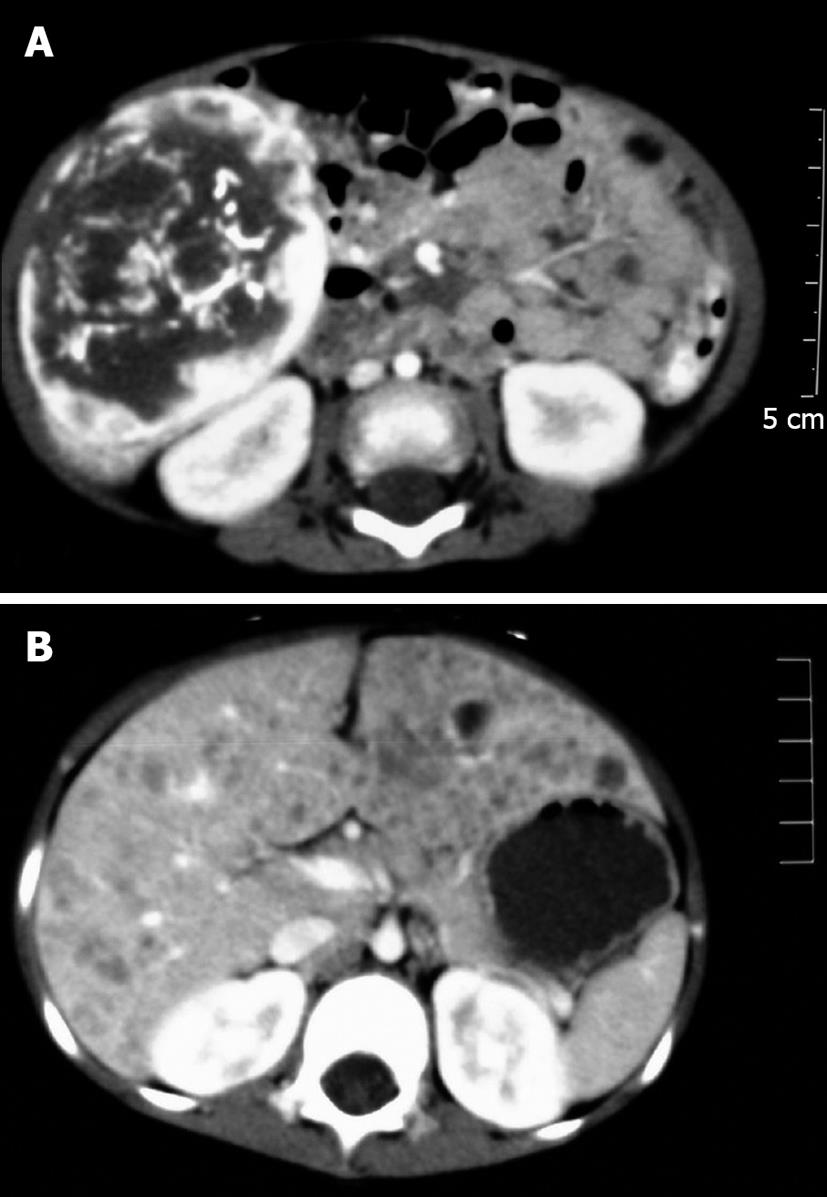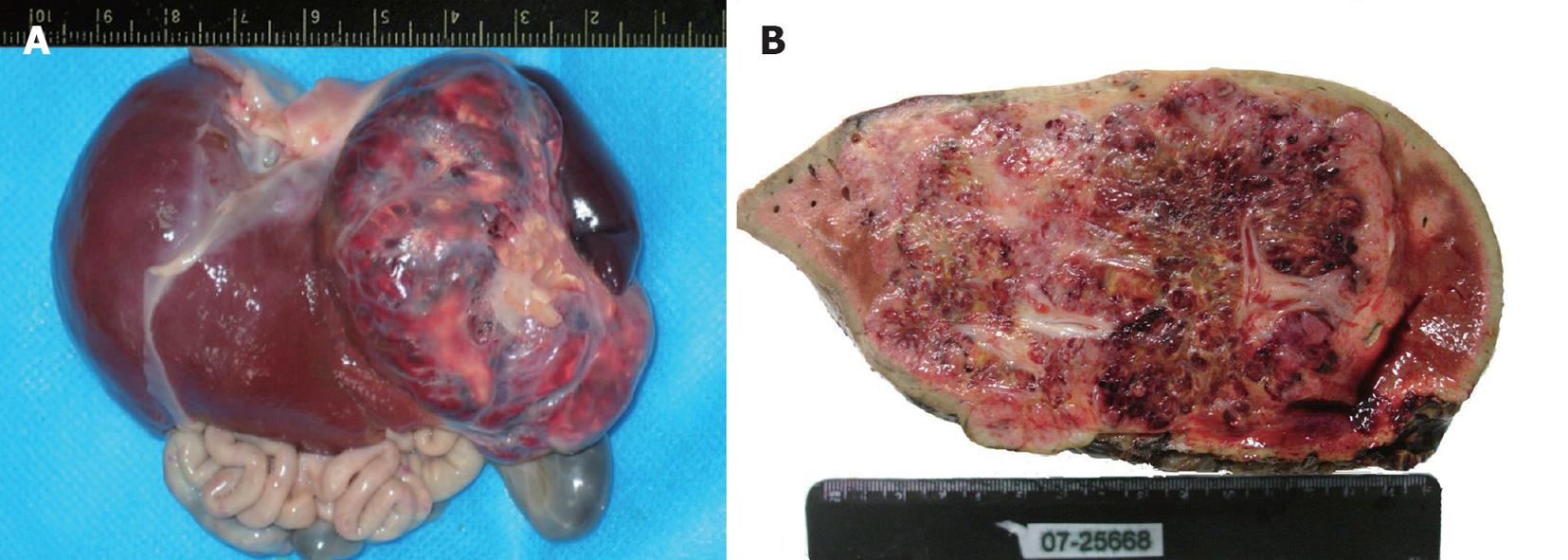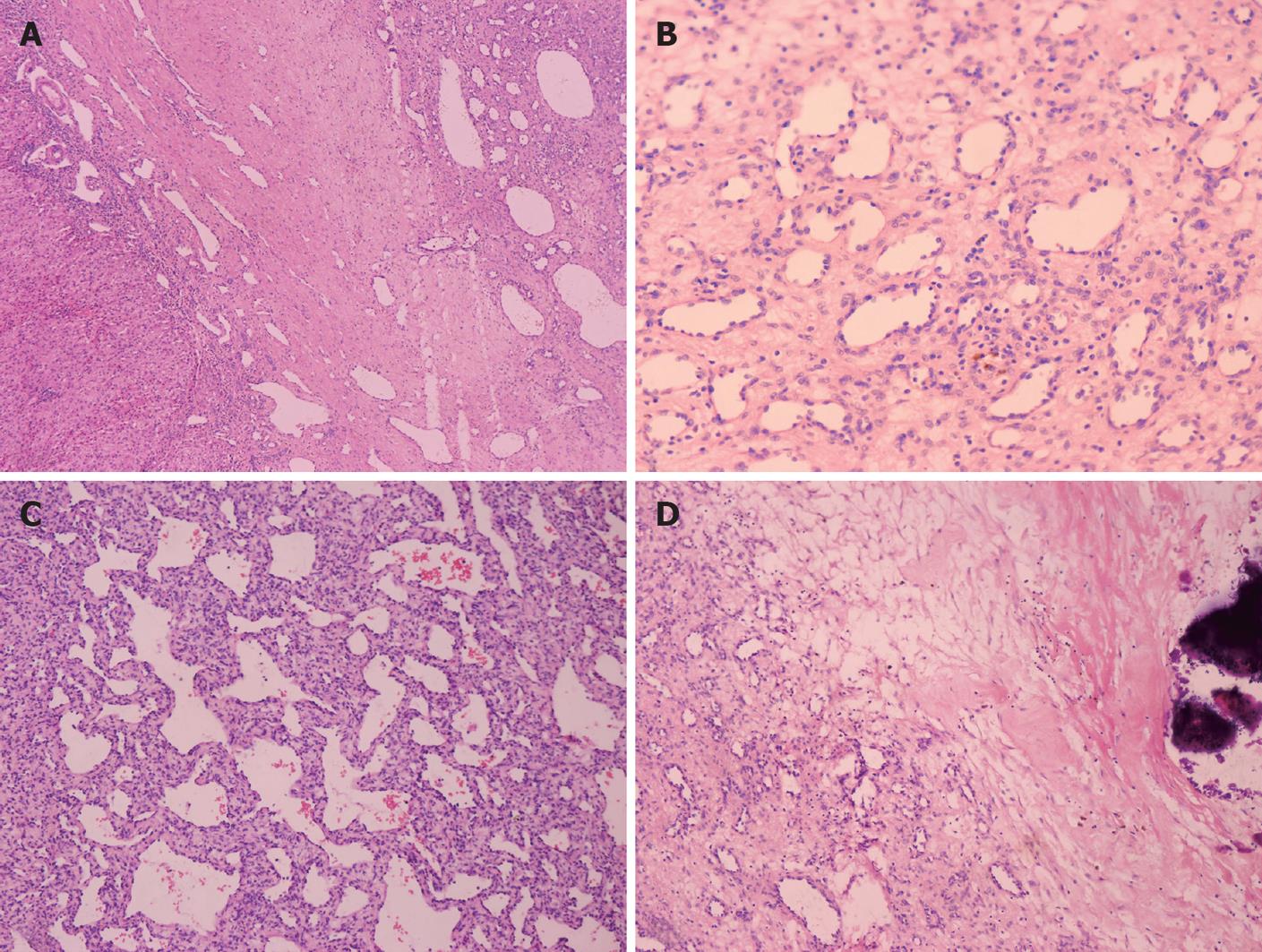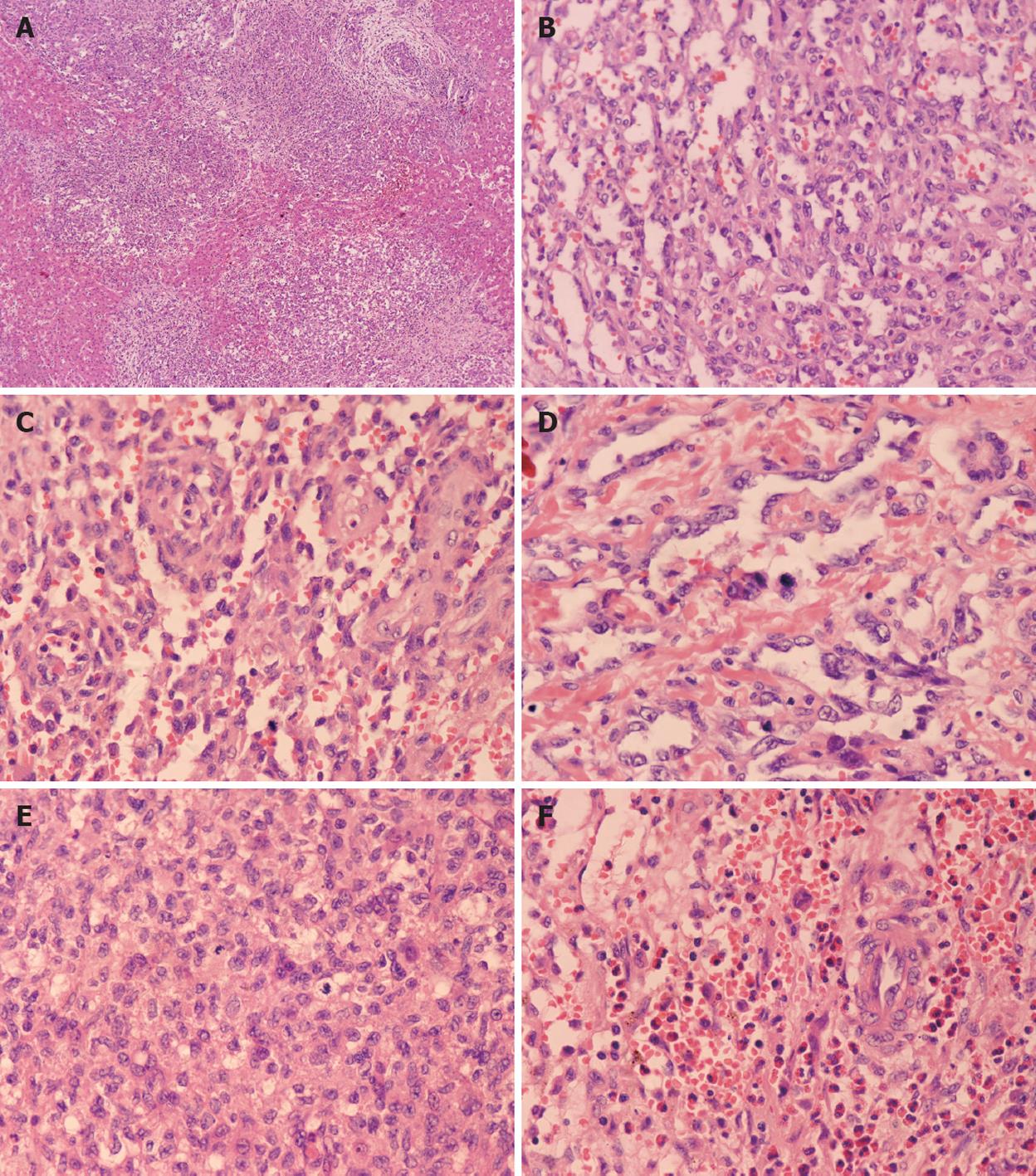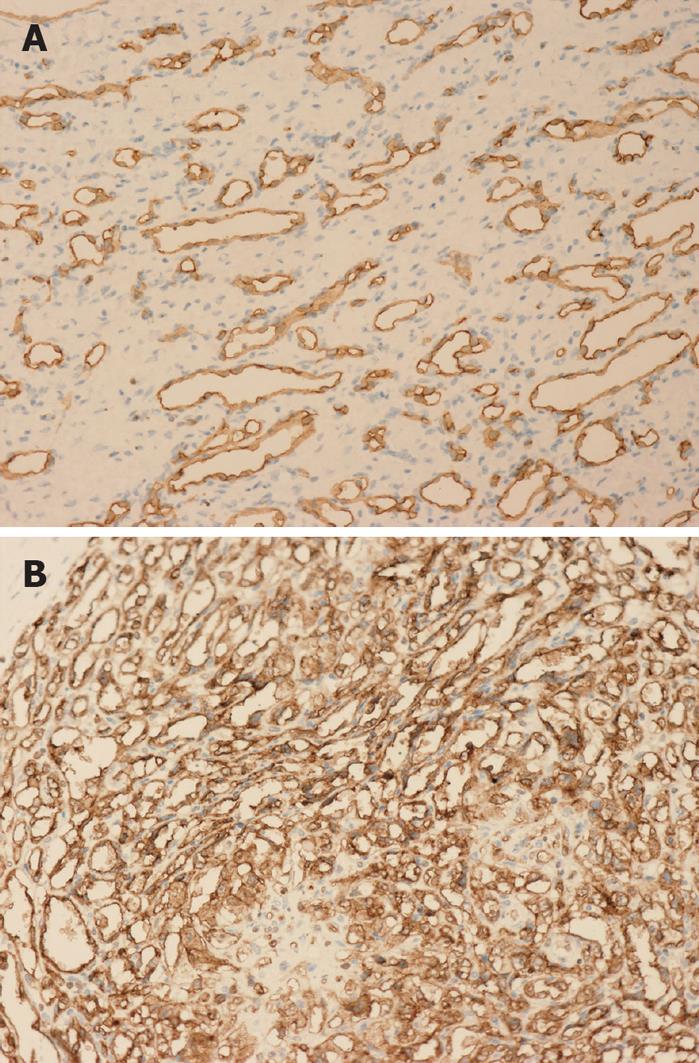Copyright
copy;2010 Baishideng Publishing Group Co.
World J Gastroenterol. Sep 28, 2010; 16(36): 4549-4557
Published online Sep 28, 2010. doi: 10.3748/wjg.v16.i36.4549
Published online Sep 28, 2010. doi: 10.3748/wjg.v16.i36.4549
Figure 1 Contrast-enhanced arterial phase computed tomography.
A: Solitary hypoattenuated mass with a well-defined contour containing calcifications in a fine-speckled pattern (case 7); B: Diffuse polycystic changes with variable sizes and an ill-defined region in both hepatic lobes (case 5).
Figure 2 Appearance of a solitary mass.
A: A solitary mass in the liver from an autopsy case (case 12); B: Cut surface of a solitary mass in liver demonstrating homogeneous, red-brown and partially ill-circumscribed tumor (case 8).
Figure 3 Histopathological features of type I lesions.
A: Mature vascular channels (case 7, HE, × 60); B: Plump endothelial cells with a bland cytological appearance (case 7, HE, × 200); C: Cavernous structures (case 7, HE, × 100); D: Calcification foci (case 7, HE, × 100).
Figure 4 Histopathological features of type II lesions.
A: Multifocal nodule without encapsulation. Tumor nodules intermixed with the hepatic plate (case 5, HE, × 60); B: Anastomosing vascular structures (case 8, HE, × 300); C: A papillary structure with atypical endothelial cells (case 5, HE, × 400); D: Hyperchromatic and pleomorphic endothelial cells with mitotic cells (case 8, HE, × 400); E: Activated mitotic cells in a dense area (case 8, HE, × 400); F: Eosinophilic granulocytes were the predominant inflammatory component in one case (case 5, HE, × 400).
Figure 5 Immunohistochemical results.
A: Expression of CD34 in endothelial cells in a type I lesion (case 7, immunohistochemistry, × 200); B: CD34 expression in endothelial cells in a type II lesion (case 8, immunohistochemistry, × 200).
- Citation: Zhang Z, Chen HJ, Yang WJ, Bu H, Wei B, Long XY, Fu J, Zhang R, Ni YB, Zhang HY. Infantile hepatic hemangioendothelioma: A clinicopathologic study in a Chinese population. World J Gastroenterol 2010; 16(36): 4549-4557
- URL: https://www.wjgnet.com/1007-9327/full/v16/i36/4549.htm
- DOI: https://dx.doi.org/10.3748/wjg.v16.i36.4549









